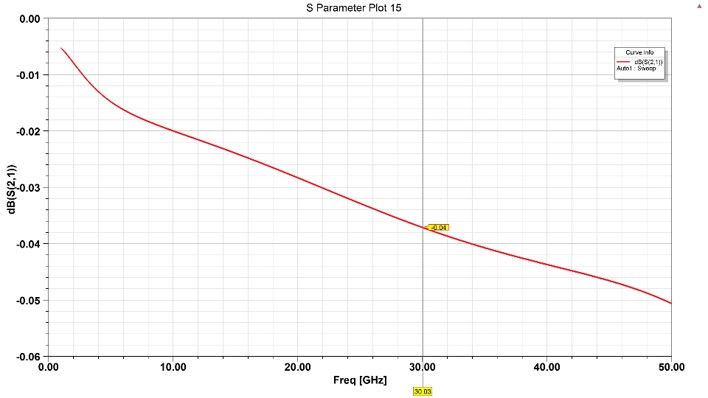Trace loss vs Frequency
- kgideacircle
- Jun 3, 2023
- 3 min read
Updated: Jul 12, 2023
At high frequencies, even a perfectly laid out trace that is impedance matched will have losses associated with it. It is quite critical to understand how these losses impact the PCB performance and electrical circuit design.
PCB trace losses are generally characterised by looking at 2 loss parameters called Insertion Loss and Return loss. In general, these 2 parameters provide reasonable insight into the way the trace is routed and the performance impact they could offer or suffer !
Return Loss
Return loss is the amount of energy that is reflected back to the source port. For example, when dealing with a simple single ended impedance controlled trace, return loss is the energy that does not get transmitted on to the destination via the trace. This energy instead is reflected back to the source. After traveling back and forth, this energy eventually dissipates as heat on the PCB and is lost from the circuit.
The fundamental reason that we see energy reflecting back to the source is down to impedance mismatch. For instance, impedance mismatch on a RF PCB can be present when transitioning from a trace to a via or even from a SMD pad to a trace. So, when dealing with RF PCBs, impedance discontinuities exist everywhere even along a impedance controlled trace if they transition between layers.
Return loss is overall a bad phenomenon, one that we ideally don't need at all in RF PCB designs. But its impossible to eliminate in the real world, so engineers try and reduce it as best as possible.
As a rule of thumb, a return loss value of -10dB or lower is considered acceptable in most scenarios as ~90% of the energy will go through and only ~10% will reflect back. Generally speaking, return loss tends to be low (good) at lower frequencies and tend to go up as the frequency of operation goes up - for the same mismatch in impedance.
Insertion Loss
Insertion loss is the amount of energy lost in the circuit before reaches the destination. For example, when dealing with a simple single ended impedance controlled trace, insertion loss is the energy that is dissipated as heat due to copper loss on the trace.
The fundamental reason that insertion loss exists is due to the fact that copper traces (on a PCB) are lossy and have some resistance associated with them. Additionally, the dielectric material has a certain Dk (dielectric constant) and Df (dielectric loss tangent) which contributes to energy loss. Its important to note that the resistance of copper increases over frequency due to skin effect. So, insertion loss for the same trace configuration is higher at higher frequencies.
The other important point to note is that insertion loss is linear to trace length. So, for example, if a trace having a length of 10mm has an insertion loss of 0.1dB then if the trace were to be 20mm long then insertion loss would double to 0.2dB
Trace loss calculations
It is always quite useful to have some rough rule of thumb numbers for trace loss to estimate how much energy a routed trace would lose on a PCB. The best way to go about it is to build a simple 50R impedance controlled strip line structure with fixed length ( for ex.: 1mm) on a 3D EM simulation software as shown below.

Figure 1: Simulation set-up with 1mm 50R Strip line
After meshing and simulation, we can see that the return loss (S11) is quite low meaning the source port, the trace and the destination port are well matched in terms of impedance and there is very little loss that comes back to the source.

Figure 2: Return loss simulation
A good return loss figure as shown above, provide high confidence in insertion loss (S21) simulation results. As can be seen below, Insertion loss increases (for the same physical length of a trace) over frequency.

Figure 3: Insertion loss simulation
This kind of simple simulation can provide a rule of thumb figure of x dB loss per mm at a specific frequency. For example, in our case, we can say that even for a perfectly impedance matched trace, the insertion loss is 0.04dB per mm at 30GHz. Once we know the routed trace length, we can use this number to estimate total PCB trace loss.



